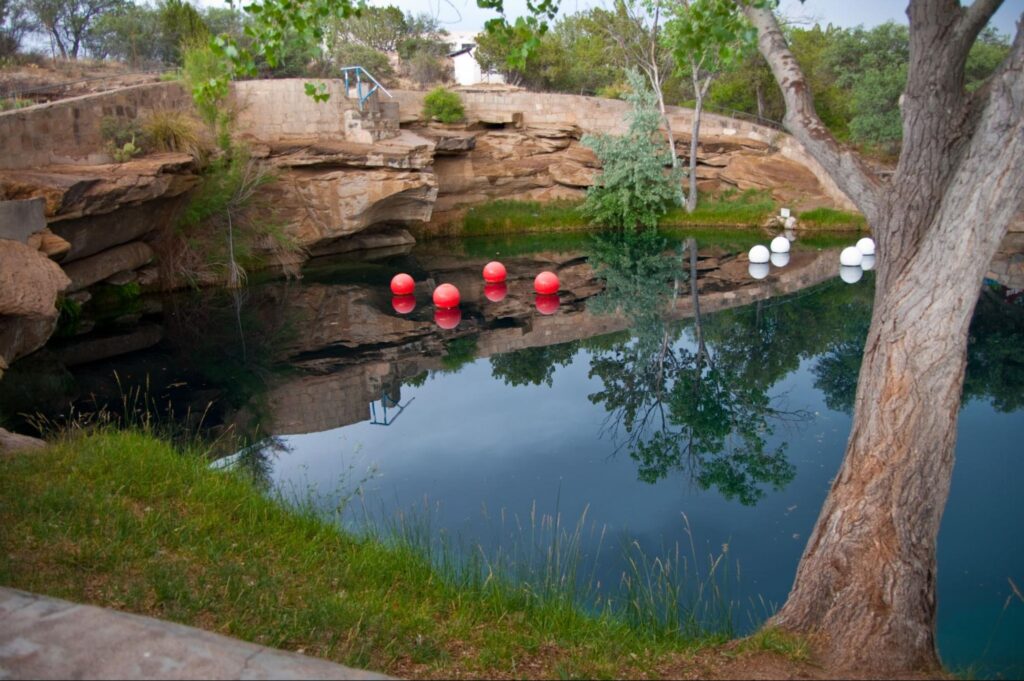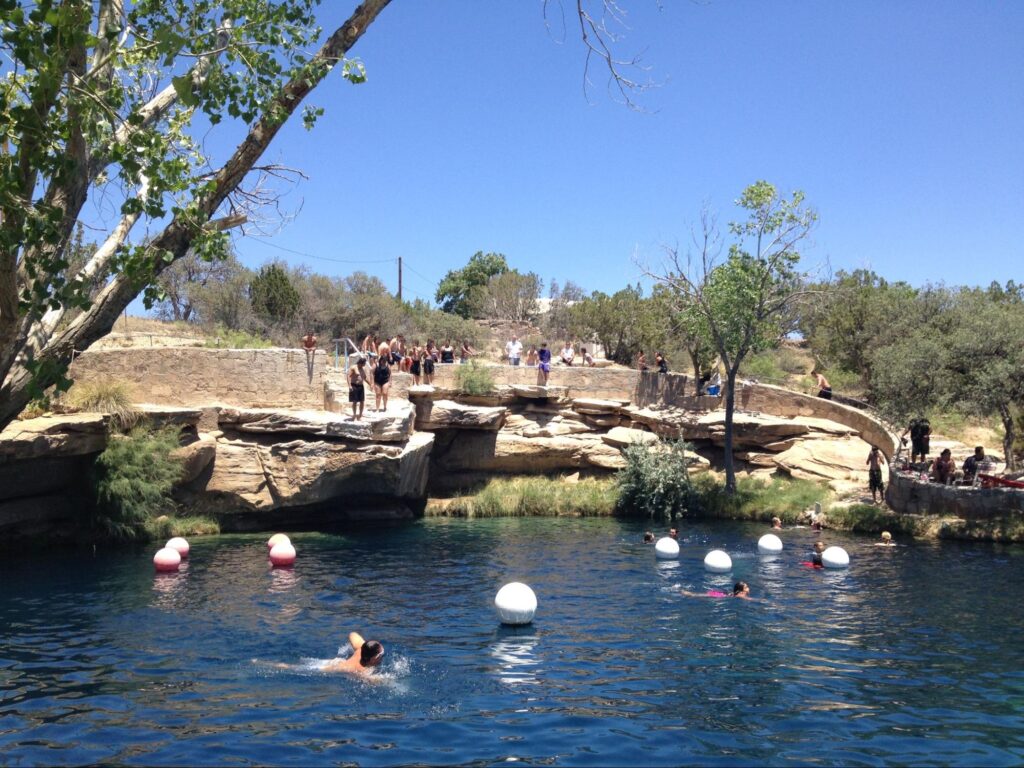
This dive destination has become world famous amongst scuba divers and travelers. Located along Route 66 in Santa Rosa, New Mexico, the Blue Hole is a natural pool that extends down over 80 feet. The pool is fed by the Ogallala Aquifer which pushes 3,000 high pressured gallons of water per minute (!) up from a depth of 200 feet.
At the bottom of the main pool lies entrances to a cave system that extend an estimated 200 feet below the surface.
Some believe that these entrances are part of the Carlsbad Caverns system, despite the known surface level entrance being 200 miles away.
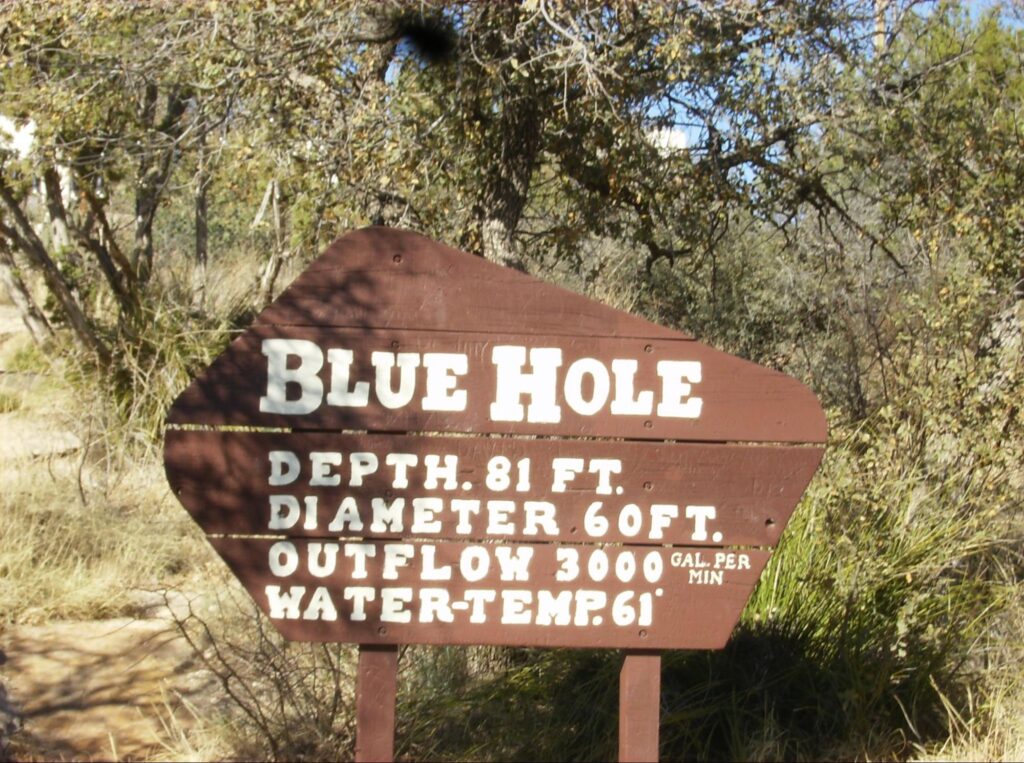
The Blue Hole has a history much older than Route 66. Native American Tribes used the source for water, as did cowboys on cattle drives. When the Dust Bowl Highway was built alongside this natural pool, it became a popular spot for tourists to cool off, go for a swim, or picnic.
In the 1930’s it became a hatchery, or place for artificial breeding, for the National Fish Hatchery. Since the 1970s it has been a destination for divers of all experience levels.
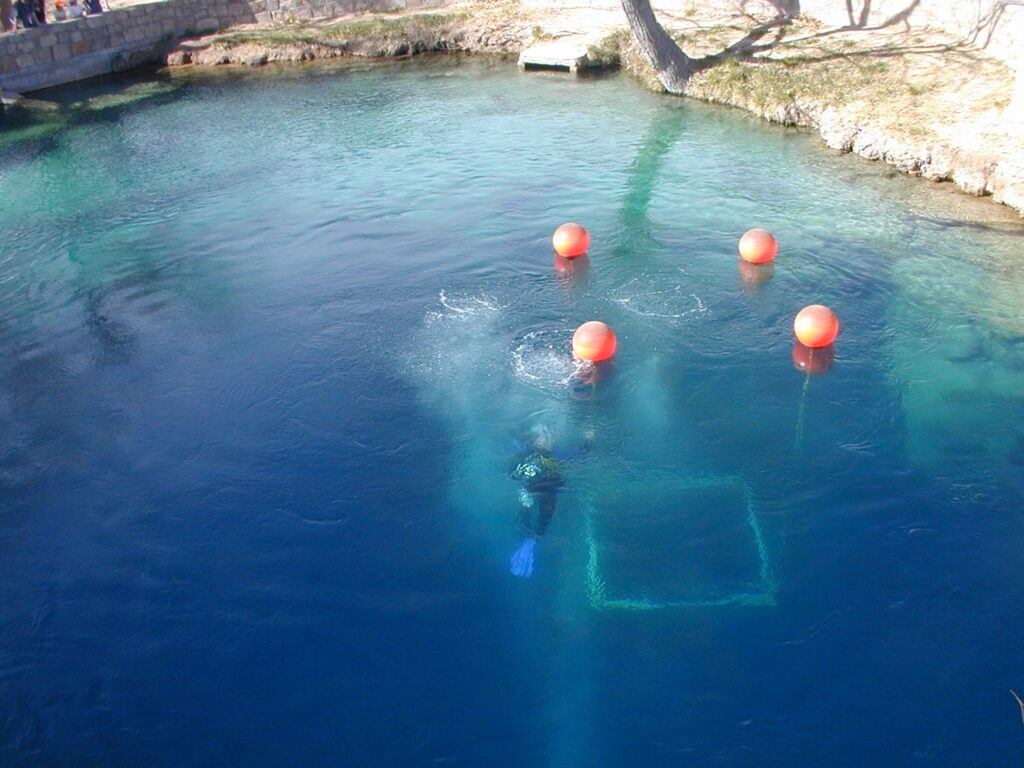
The caves below the 80-foot depth of the main pool have been a source of fascination and fatality, over the years. In one case from 1976, two diving students broke off from their colleagues and failed to return to the surface. Their bodies were eventually found in the underlying cave system which prompted city officials to gate off the entrances to the caves.
In 2016, Shane Thompson – an experienced diver, who had been officially allowed into the cave system, broke away from his group after a tether broke. He became lost and found himself trapped in a deadend of the underground caverns. Disoriented by silt and low visibility, he was unable to find his way out. By the time his colleagues found him, he had drowned.
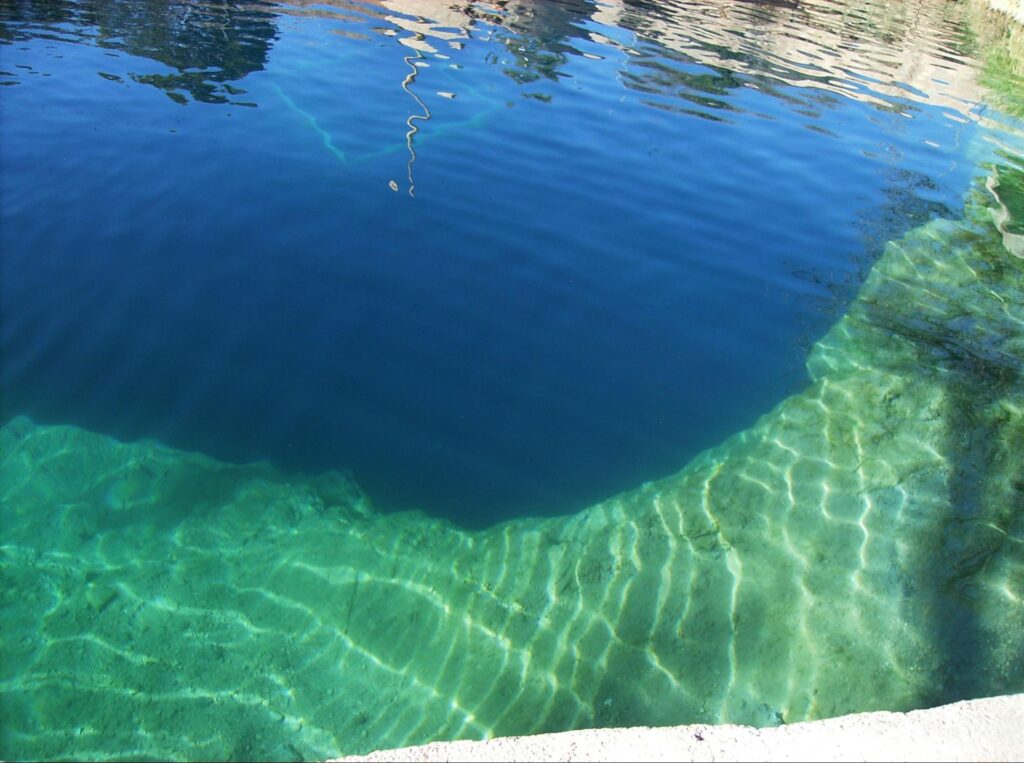
Because of incidents like these, Santa Rosa has placed gates, and dumped rocks into the well, blocking access to the immense underground, underwater, cavern system. At this point in time, we can only speculate how far down the cave system actually goes, and if it does in fact connect with the Carlsbad Caverns.
Underwater cave exploration is not something that inexperienced divers should attempt. Careful calculations including the use of high-altitude dive tables (especially in the case of Santa Rosa, which has a substantial elevation), decompression stops, and necessary equipment need to be understood and planned for before a dive. Caving is already a dangerous endeavor, but when you add water into the mixture, the potential for catastrophe becomes exponential.
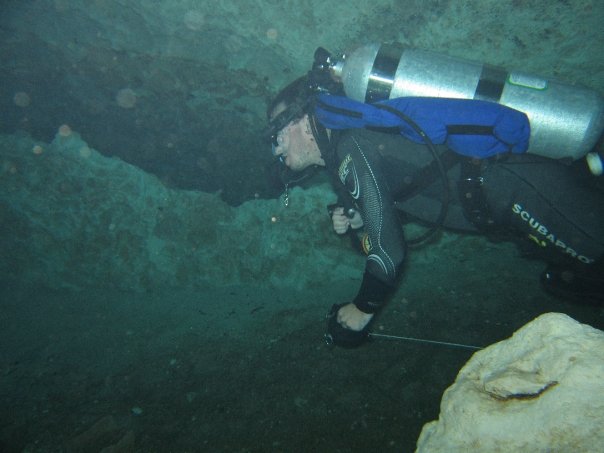
There is something deeply human, and deeply American, about exploration beyond the safety net. If “curiosity killed the cat” then we should strive to use our 9 lives in an adventurous and glorified attempt, rather than becoming the mouse.
The Blue Hole is open to the public. It’s a staple along the Dust Bowl Highway, and a terrific spot to take photos or cool from New Mexico’s desert heat. Divers who have made it down to the bottom of the 80 foot pool report having found masks, crucifixes, and even bones – but there is a greater treasure to be found, to be explored, beyond the underwater barriers the city has constructed and imposed. If we are truly American, if we believe in the freedom that 66 represents, if an individualistic manifest destiny brings us closer to our history, origins, and truth, then the underground cave system needs to be opened and explored thoroughly. Like the Mother Road, we decline, turn to rubble, and become ghosts of what was once a vibrant life. Greatness, exploration, and conquest have never been achieved by the scared, the safe, or the timid. Deep in this country’s caverns and cenotes lies a reality more strange and real than anything that exists along the surface of Route 66.
